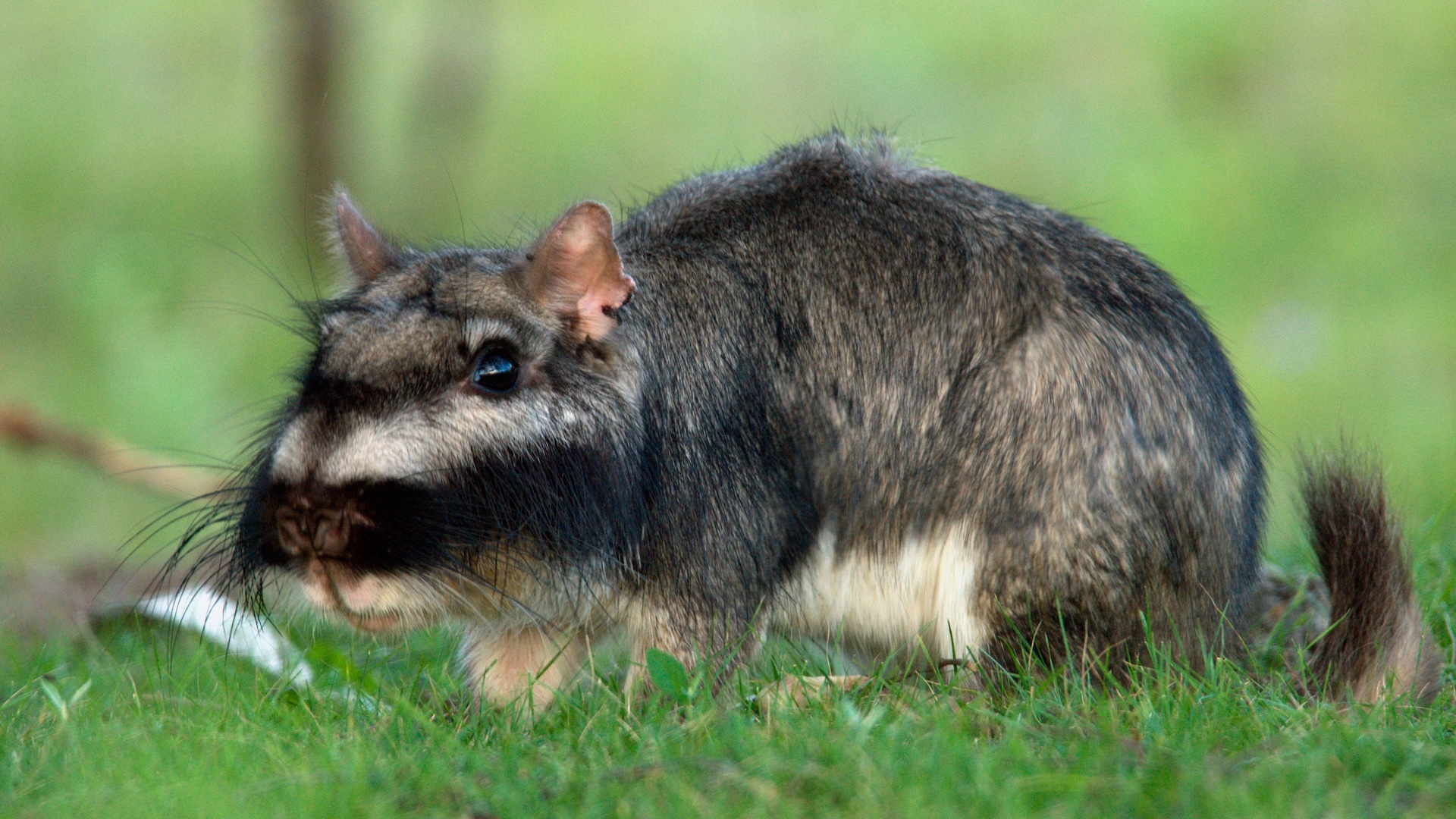
Name: Plains viscacha (Lagostomus maximus)
Where it lives: South America, from southern Bolivia and Paraguay to Argentina
What it eats: Grasses, shrubs, seeds, and even its own feces
Across the vast plains of southern South America, a chubby rodent reigns underground in a vibrant, hierarchical world. The plains viscacha, a stout cousin of the chinchilla, builds subterranean "cities" known as "vizcacheras," where up to 50 individuals live together. With tunnels reaching 10 feet (3 meters) deep, these complex networks of dark chambers and hidden entrances fascinated Charles Darwin during his 19th-century travels through the region.
These underground engineers are thought to live up to eight years. These animals are organized into complex colonies and guided, in part, by the vizcachón — the oldest and most experienced male — who signals the all-clear each evening. As dusk falls, the vizcachón is the first to emerge as a lookout. If all is calm, he gives the signal, and the rest of the group follows.
The name "viscacha" is derived from the Quechua word "wisk'acha" — a word that mimics the sound the animal makes. It has a broad head, large eyes, and pointed ears, as well as long, stiff whiskers; short front legs with strong claws for digging, longer hind legs for leaping; and a short, furry tail. Its grayish fur — which is darker on the back, and lighter on the belly — and the two black stripes running from its snout past its eyes give it a striking look.
But it's not just its appearance that's notable; this rodent holds a mammalian record: The female viscacha can release up to 326 eggs in a single reproductive cycle, making it the most prolific ovulator ever recorded among mammals, according to a study published in the Journal of Experimental Zoology – A.
Viscachas reproduce in the fall, when females go into heat and males compete fiercely — sometimes even fighting — for a chance to mate. Sex takes place inside the burrow, and after a five-month gestation, the female usually gives birth to two young.
Even more surprising is how the viscacha pulls off this feat: A rare dual mechanism combines spontaneous ovulation, which may help eliminate defective eggs, with induced ovulation, which is triggered by hormones or seminal plasma, to ensure the fertilization of the highest-quality eggs.







